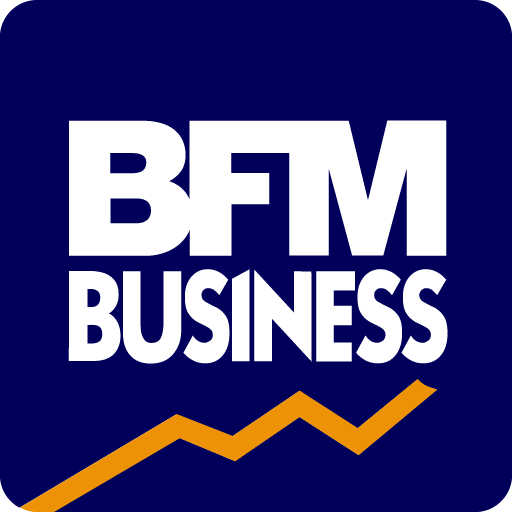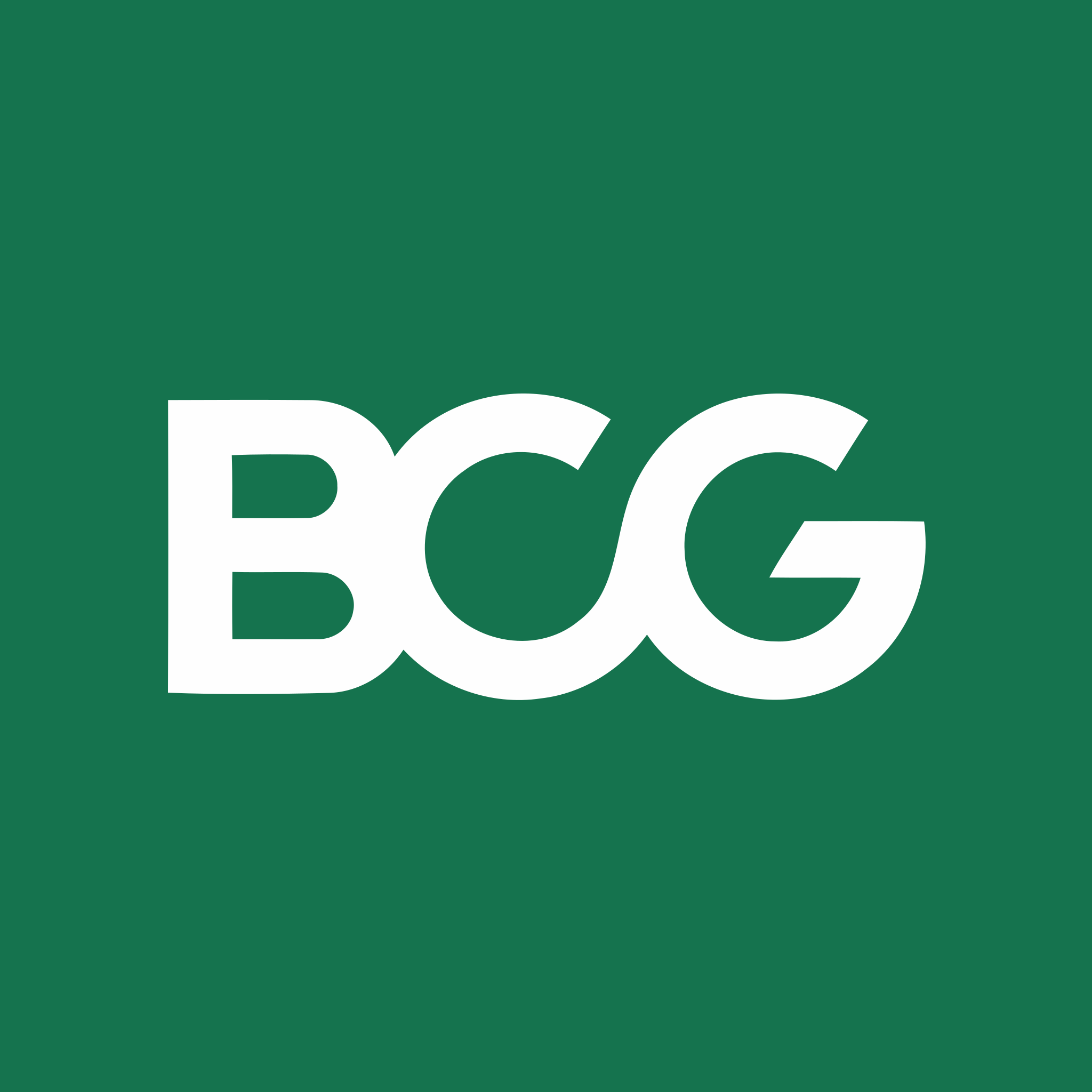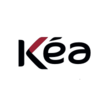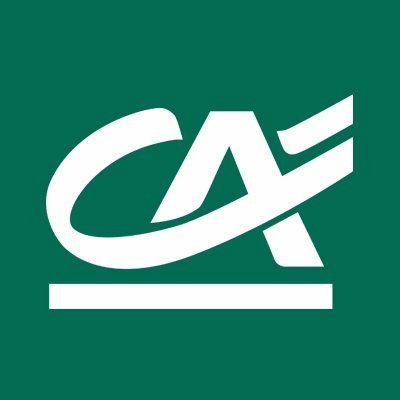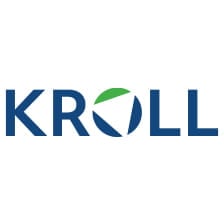Summary of our market study
The French HVAC market is estimated to be worth 7.4 billion euros by 2022.
The global HVAC market is valued at around $140 billion, with an average annual growth rate of 6%.
The French market will double in size between 2015 and 2022.
Cooling is the dominant segment, with 55% of the market.
Growth in the French market stems mainly from renewable energy consumption in heating, which rose by 82% between 2006 and 2021, with wood energy predominating (63%).
Regulation plays a key role, with eco-loans and other government incentives encouraging the adoption of cleaner, more energy-efficient HVAC systems. The number of eco-loans granted for renewable energy heating systems reached 61,034 in 2021.
The residential sector benefits from government schemes such as "Un coup de pouce pour les économies d'énergie", MaPrimeRenov, and zero-rate eco-loans. Between 2016 and 2021, the number of eco-loans granted rose by 45%.
The public sector is supported by the decree on the renovation of tertiary buildings, which aims to reduce energy consumption by 60% by 2050
The main market players range from generalists like the Vinci Group and Bouygues Construction to specialist companies like Daikin.
A large proportion of sales in the HVAC market come from maintenance and retrofit activities, which account for almost 70% of the market. The remainder is attributed to new construction.
HVAC companies are mainly concentrated in the south and north-east of France, and the Île-de-France region.
Several key players have established a strong presence
- Dalkia, known for its comprehensive energy services
- Engie, formerly GDF Suez, is a global energy player and an expert in the heating, ventilation and air-conditioning sector.
- Spie is an independent European leader in multi-technical services.
- CDL Elec is a major distributor of electrical equipment and heating, ventilation and air-conditioning systems.
- Vinci: Its expertise naturally extends to heating, ventilation and air-conditioning systems.
- Eiffage, a major construction company, extends its services to heating, ventilation and air conditioning.
- Bouygues Construction brings innovation and sustainability to its projects.
- Climat de l'air, Idex, Snef, Patricola and MCI offer customized HVAC solutions
to understand this market
Detailed content of our market study
 Inforamtion
Inforamtion
- Number of pages : 35 pages
- Format : Digital and PDF versions
- Last update :
 Summary and extracts
Summary and extracts
1 Market overview
1.1 Overview and definition of the HVAC market
HVAC technology encompasses all installations for heating, ventilating and air-conditioning a building, whether commercial or industrial .
Several activities are grouped together in the HVAC market:
- Gas and oil-fired boilers
- Heat pumps
- Air conditioning
- Ventilation and air treatment
- solar equipment
- Water radiators
- Filtration
- Wood-fired boilers
Thanks to the development of technology and growing demand for energy-efficient products, the global HVAC market is expected to grow at a CAGR (compound annual growth rate) of 6.3% over the period 2023-2030. The French market is also promising, having almost doubled in size between 2015 and 2022[UNICLIMA].
Indeed, HVAC engineering is a business with a strong sustainable development and energy-saving component, since its aim is to develop solutions for regulating the temperature of business premises or homes. Because of its importance, HVAC is closely linked to renewable energies (solar, biomass, condensing boilers, biogas, etc.).
In France, the market has been growing steadily since 2020, and is set to continue to do so in the years ahead.
The HVAC industry is therefore highly dependent on the health of the construction market and on regulatory advances in environmental protection.
1.2 The global HVAC market
The global HVAC systems market was valued at ***.* billion USD in ****, and is expected to grow at a CAGR (***) of *.*% over the period ****-****, reaching a value of ***.** billion USD. The biggest consumers of HVAC systems are Asia-Pacific, which accounts for **% of the market, and the USA, with a market share of **.*%. Growth in the European market is mainly driven by Germany, whose market is expected to grow at a CAGR of *.*% between **** and ****[***]
HVAC market sales trend World, ****-****, in billions USD Source: ****
According to the International Energy Agency, cooling will account for **% of global electricity consumption in **** and **.*% of the HVAC market. Heating accounts for **.*% of the market[***]
Market breakdown by use World, ****, in Grand View Research The residential sector is the largest user of HVAC. Global HVAC market breakdown by location of use World, ****, % (***) Source: ****
1.3 HVAC engineering in France: a sector linked to construction and changing regulations
According to the trade federationUniclimathe HVAC market in France represented **.* billion euros in ****, including *.* billion euros in exports. As a result, the French HVAC market represented *.* billion euros in ****.
If we consider that the evolution of the sales index for the "heating and air-conditioning installation work" sector corresponds to that for HVAC, then we obtain the following graph:
evolution of HVAC market size France, ****-****, in billions of euros Source: ****
This shows that market growth will accelerate between **** and ****. Continued growth can be observed over the period, despite a decline in **** due to the Covid-** pandemic.
Most of the market's sales come from the "maintenance-improvement" segment, which accounted for **% of the market in ****, compared with **% for "own-build work in new construction".
Breakdown of HVAC market sales France, ****, in Source: ****
This market in volume corresponds in particular to :
Source: ****
To this must be added tertiary air conditioning, comprising liquid coolers(***), building air handling units and building ventilation systems.
2 Demand analysis
2.1 Overview of the sector and business segments
The construction sector as a whole
The HVAC sector is closely linked to the construction industry. We therefore need to take a close look at the available data on construction in France, demand and its evolution.
On the building market, the FFB (***).
Source: ****
The different markets for metal construction; Public procurement.
The first market in which climatic engineering companies can take an interest is that of public contracts, i.e. orders placed by the State and local authorities - regions, départements or communes.in other words, orders placed by the State and local authorities - regions, départements or communes.
Depending on their size, public-sector contracts can be more or less interesting for builders. Smaller contracts generally involve the renovation or construction of small elements in local communities. The larger ones, however, can involve far more imposing structures.
The size of communities and their wealth therefore play a decisive role. The richer they are, the more they can spend on infrastructure. To clarify the table below, we need to define the per capita financial potential (***).
By comparing this data with the distribution of communes according to size, we can gain an overview of the most interesting infrastructure construction markets for ...
2.2 Renewable energies gain ground
Among heating and energy options, renewable energies seem to be playing an increasingly important role in consumption.
Total primary consumption of renewable energies for heat production France, ****-****, in thousands of kilotonnes of oil equivalent Source: ****
In ****, total primary consumption of renewable energies in France amounted to approximately *,*** kilotonnes of oil equivalent (***). By ****, consumption had risen to approximately **,*** ktoe, an increase of **.**% over the period ****-****.
In ****, this primary consumption of renewable energy for heating purposes corresponded to *** TWh (***), **% of which came from the wood-energy sector.
Breakdown of renewable energy consumption for heating purposes by sector France, ****, in Source: ****
share of renewable energy in gross final consumption France, ****-****, in % Source: ****
From the above observations we can see that the share of renewable energy sources in the heating and cooling sector in France has seen almost uninterrupted growth from **** to ****. This proportion almost tripled from **.*% in **** to **% in ****.
2.3 Regulations drive demand for less polluting products
Number of eco-loans granted in ****France, in units
Source: ****
Supported byeco-loan "a zero-interest loan granted by the French government to finance energy-efficient home improvements, the number of insulation and heating systems using renewable energies is on the rise. The number of eco-loans granted is rising year on year, reaching **,*** in **** (***).
number of eco-loans granted France, ****-****, in units Source: ****
The following graph shows a gradual reduction in sales of traditional gas and oil-fired boilers of almost **% between **** and ****. At the same time, sales of gas and oil condensing boilers, which are eligible for eco-loans, increased by **% over the same period.
Number of gas and oil-fired boilers delivered by type France, ****-****, in thousands Source: ****
Finally, there has been a marked increase in the number of condensing gas and oil boilers over the past * years, to the detriment of conventional gas and oil boilers.
Regulations to drive future growth
In the wake of the covid-** crisis, France's stimulus package has earmarked a substantial budget for building renovation. Whether public or private, this renovation is part of the energy transition, and nearly *.* billion euros have been earmarked for energy-efficient building renovation and sustainable construction. The government plans to spend this sum over a ...
2.4 Le développement du chauffage renouvelable
Face à la hausse des prix de l’énergie, les arbitrages budgétaires liés au chauffage se multiplient. En ****, ** % des Français déclarent avoir déjà renoncé à chauffer leur logement pour des raisons économiques, un taux supérieur à celui des renoncements à l’usage de la voiture (***). Ce chiffre témoigne d’un enjeu social croissant et d’un besoin urgent d’alternatives plus abordables et durables. Le chauffage devient un poste de dépense critique, et le recours aux dispositifs économes et renouvelables devient central pour maintenir le confort tout en limitant les coûts.
Renoncements liés à la facture d’énergie France, ****, en % Source: ****
Dans ce contexte, le bois reste une solution de référence pour de nombreux foyers. En ****, ** % des Français l’utilisent comme mode de chauffage principal et ** % comme chauffage d’appoint. Si l’on ajoute les usages d’agrément, plus d’un tiers des ménages y ont recours (***). Ces chiffres confirment l’importance du bois dans le mix énergétique résidentiel, en particulier dans les zones rurales et périurbaines, où il reste l’un des seuls moyens de chauffage décarboné peu onéreux.
Usage du chauffage individuel au bois France, ...
2.5 La qualité de l'air intérieur : un enjeu croissant pour les utilisateurs de climatiseurs
La pollution de l’air intérieur est désormais perçue comme une gêne réelle par une partie importante de la population française. Selon le baromètre ADEME ****, ** % des répondants déclarent en ressentir les effets « parfois » et * % « souvent », tandis que ** % affirment ne les ressentir que rarement. Toutefois, ** % des Français indiquent n’avoir jamais été gênés. Cette perception partagée souligne que si la pollution intérieure n’est pas universellement ressentie, elle reste un sujet d’inconfort pour une proportion significative de la population.
Ressenti de la gêne liée à la pollution de l'air intérieur France, ****, en % Source: ****
Lorsqu’il s'agit d’identifier les causes de la pollution de l'air extérieur, les Français pointent majoritairement la circulation routière (***). Cette hiérarchisation montre que les principales préoccupations environnementales restent centrées sur les émissions massives visibles et quotidiennes, ce qui alimente une sensibilité accrue à l’air respiré.
Sources perçues de pollution de l'air extérieur France, ****, en % Source: ****
Sur le plan sanitaire, la pollution de l’air est perçue comme une menace sérieuse. ** % des Français estiment que la pollution de l’air a ...
3 Market structure
3.1 Market value chain
According to the Bouygues Energie website, the HVAC value chain has four main components
Large companies oversee work for the public and corporate sectors. They can draw on their complementary activities and strong geographical coverage. Smaller companies focus on work and maintenance for private customers.
3.2 Companies in the market
We can use NAF code **.**B to study companies in the HVAC sector in France. Companies registered under this NAF code mainly install heating and air-conditioning equipment.
growth in the number of HVAC companies France, ****-****, in units Source: ****
The graph above shows that the number of companies operating in the HVAC sector is growing steadily over the period ****-****, even during the Covid crisis in ****. The number of companies in this sector will increase by **.*% in **** compared to ****.
This growth goes hand in hand with the increase in the number of HVAC employees over the same period:
change in the number of HVAC employees France, ****-****, in number of employees Source: ****
With ***,*** employees in ****, representing a **.*% increase in the salaried workforce compared to ****, this sector is doing well. According to UNICLIMA, new jobs are expected to be created in **** by the association's member companies. A working group has even been set up in **** to attract more employees and facilitate recruitment in a buoyant market that appears to be unattractive.
As for the geographical distribution of HVAC companies, they are mainly located in the southern and northeastern parts of the country. Île-de-France is the region with the most companies (***).
3.3 Strong competition due to proximity to market
According to forceplus.comthere are a wide variety of channels that can be used to capture customers
Telephone prospecting Website attractiveness: referencing, content, etc. Targeted e-mail prospecting Chat bot Creation of HVAC content Relations with technical centers
According to a Force Plus study, **% of customers in this sector use at least three different channels to get in touch with a company. What's more, in such a technical sector, the quality of customer relations is essential. In fact, */* of HVAC customers are willing to pay more for excellent customer service.
Source: ****
According to Forceplus, the distribution of HVAC systems is fairly complex, but it's the installers who offer the solution to the end customer, and the energy suppliers who provide the fuel. Installers buy from distributors (***).
3.4 The main market players
The HVAC market is dominated by the major energy services companies: Engie, Dalkia, Veolia and SPIE. Engie is by far the market leader. In ****, following the acquisition of a majority stake in SUEZ, Véolia saw a sharp increase in sales, placing it in third position in this market.
These groups' biggest competitors are companies that dominate the construction sector: Bouygues, Vinci and Eiffage, followed by Atalian, which have specialized energy services divisions.
The chart below shows these major groups present in the HVAC sector according to their sales in **** (***):
Main players in the HVAC sector France, ****, in millions of euros Source: ****
3.5 Événements sectoriels : les rendez-vous incontournables du génie climatique en France en 2025
Le marché français du génie climatique est structuré autour de plusieurs salons professionnels majeurs, qui constituent autant de points de rencontre incontournables pour les industriels, prescripteurs et installateurs. Ces événements sont l’occasion d’exposer de nouveaux produits, de suivre les dernières tendances réglementaires (***) et d’identifier des opportunités commerciales dans les secteurs tertiaire, industriel ou résidentiel.
Parmi les salons les plus stratégiques en **** :
Interclima (***)Le rendez-vous de référence pour le chauffage, la ventilation, la climatisation et les solutions bas carbone. Il réunit les principaux fabricants et décideurs du secteur du bâtiment autour de l'efficacité énergétique. BePOSITIVE (***)Dédié à la transition énergétique dans le bâtiment. Ce salon met en avant les technologies renouvelables, les systèmes hybrides et les innovations connectées. Il cible en particulier les marchés du tertiaire et des collectivités. Salon Bois Énergie (***)Focalisé sur les solutions biomasse. Il attire les maîtres d’ouvrage publics, exploitants industriels et collectivités engagés dans la décarbonation du chauffage. IBS – Intelligent Building Systems (***)Spécialisé dans les technologies de gestion intelligente des bâtiments. Un rendez-vous pertinent pour les acteurs ...
4 Offer analysis
4.1 Different types of installation
Heating and air conditioning
Due to the many areas included in HVAC, there is a wide variety of offers and solutions. When it comes to heating, the solution to be adopted depends primarily on the volume of the building to be heated. Depending on requirements, heating may be gas or electric, radiant or forced-air (***), centralized or decentralized.
The CEDIBAT website, affiliated to GRDF, provides us with the following chart, which details solutions using gas, which is the system most frequently used for heating large volumes:
In the case of single-family homes, a large proportion of heating is provided by electricity. According to Voltalis, **% of French households used electricity to heat their homes in **** .
The main types of electric heating used are electric convectors, inertia radiators, electric boilers, air-to-water or air-to-air heat pumps, and electric radiant panels.
As for air conditioning, as the website Energeek individual homes are divided between low-power individual systems and more efficient centralized systems: reversible heat pumps, underfloor cooling or ductwork.
Ventilation
In single-family homes, ventilation is designed to renew "stale" air, due to the humidity and odours it carries, and replace it with fresh air from outside. According to Economiedenergie.com there are several systems for ventilating ...
4.2 Price trends and the quality challenge for installers
To get an idea of price trends in the HVAC sector, we can observe the evolution of the price index - base *** in **** (***) given byInsee.
In the graph below, we can see a steady rise in the price index, from *** in **** to ***.** in ****, an increase of **.**%. This sharp acceleration in **** can be explained by the effect of inflation and the upheaval of the war in Ukraine on the energy sector, particularly on gas prices.
evolution of the price index for "plumbing, heating and air-conditioning services in the field of maintenance and improvement". France, ****-****, price index - base *** in **** Source: ****
The quality challenge for installers
Following on from the financial incentives for energy-efficient building renovation (***) label so that their customers can obtain these subsidies. By creating this label, the French Ministry of the Economy wanted to guide private customers towards competent installers, whose expertise would best ensure the energy savings achieved by their renovation work. The qualification, valid for * years, is broken down into several specializations: Eco artisan for energy performance advice, Qualifelec for energy-efficient electrical installations, etc.
4.3 Nouvelles tendances de l’offre : le chauffage connecté au cœur de la transition
Le développement du chauffage connecté s’impose comme l’une des évolutions les plus significatives de l’offre sur le marché du génie climatique. Ce mouvement, longtemps porté par des innovations privées et des logiques de confort, prend désormais une dimension réglementaire, avec un impact direct sur les fabricants, les installateurs et les consommateurs.
En effet, selon le décret n°****-*** du * juin ****, tous les bâtiments résidentiels et tertiaires, anciens comme neufs, devront être équipés d’un thermostat programmable ou connecté à compter du *er janvier ****. Cette obligation vise à instaurer une régulation fine de la température pièce par pièce, afin de réduire la consommation énergétique des logements. Elle prolonge des dispositions déjà existantes, comme l’obligation d’installation de programmateurs lors du remplacement d’une chaudière depuis ****, mais en l’élargissant à tout le parc existant, ce qui représente plus de ** millions de logements concernés à terme.
Ce virage réglementaire s’inscrit dans le cadre du Plan de sobriété énergétique, lancé en **** en réponse à la crise énergétique. Il stipule notamment que « l’obligation d’installer un programmateur de chaudière ...
4.4 Tendance de l’offre : l’hybridation des systèmes de chauffage
Face à la nécessité de réduire les émissions de CO₂ et d’assurer la continuité du confort thermique, l’hybridation des systèmes de chauffage s’impose comme une solution d’avenir dans les secteurs résidentiel et tertiaire.
Concrètement, ces systèmes associent une pompe à chaleur (***) – souvent alimentée à l’électricité – à une chaudière gaz ou fioul à condensation. Grâce à une régulation intelligente, l’appareil sélectionne automatiquement l’énergie la plus pertinente selon la température extérieure, les pics de consommation ou encore les coûts énergétiques. La pompe à chaleur fonctionne en base, tandis que la chaudière prend le relais par grand froid. Cette combinaison permet ainsi de réaliser jusqu’à ** % d’économies sur la facture énergétique tout en réduisant fortement les émissions de CO₂. [***]
Les industriels se mobilisent :
Buderus propose des systèmes hybrides « Add-on », ajoutables à une chaudière existante, ou « All-in-one », compacts et adaptés aux rénovations lourdes. Elco, de son côté, cible le secteur tertiaire avec des couples comme la PAC AEROTOP EVO et la chaudière TRIGON L PLUS, garantissant à la fois performance, silence et conformité avec le décret tertiaire. [***] Selon France Info (***), près ...
4.5 Une offre disruptive portée par l’innovation géothermique et l’intelligence artificielle
L’essor de solutions hybrides mêlant énergie renouvelable locale, capteurs intelligents et algorithmie illustre la montée en puissance d’un chauffage-climatisation de nouvelle génération, plus sobre et adaptable. La start-up française Accenta s’impose comme un exemple emblématique de cette dynamique.
Créée en **** et issue de l’accélérateur de l’École Polytechnique, Accenta développe un système de géostockage thermique intelligent piloté par intelligence artificielle, à destination des bâtiments tertiaires et logements collectifs. La solution repose sur trois piliers :
une plateforme de suivi énergétique en temps réel, alimentée par des capteurs installés dans le bâtiment ; un logiciel d’analyse prédictive, qui ajuste les besoins en chaud ou en froid selon les usages, l’évolution climatique ou la vétusté de l’isolation ; une pompe à chaleur géothermique, couplée à un réseau de sondes verticales jusqu’à *** m de profondeur, pour capter ou restituer l’énergie selon les saisons.
Le système permet de réduire la consommation énergétique de ** à ** % et jusqu’à ** % des émissions de CO₂, pour un coût annoncé jusqu’à ** fois inférieur aux alternatives standards du marché.
Déployée sur * ...
5 Regulations
5.1 Strong government incentives for the residential sector
The regulatory environment changes regularly, but remains highly promising for the residential sector
The French Ministry of Ecological Transition and Solidarity has launched the " A helping hand for energy savings " which enables households to benefit from a bonus ranging from ** to *,*** euros to reduce their carbon footprint. Available according to income and number of people in the household , it can be used to finance a more environmentally-friendly heating system (***)
In addition, since January *, ****, MaPrimeRenov replaces the Tax Credit for Energy Transition (***). The work must be carried out by an RGE-certified professional on a principal dwelling built more than two years ago.
A Zero-rate eco-loan (***).
The CEE (***) premium is a bonus that private companies qualified as polluters must pay to private individuals to enable them to carry out energy-saving renovation work. The CEE targets a company must achieve are set by the government for a three-year period, on pain of a heavy fine.
Although the energy voucher scheme is well known for helping low-income households to pay their energy bills, it can also be used as a means of reducing energy poverty. pay their energy bills, they can also be used to carry out work on energy installations.
Finally, a subsidy from ...
5.2 Une réglementation de plus en plus contraignante pour le secteur de la climatisation
La filière climatisation est désormais au cœur des priorités réglementaires en matière d’efficacité énergétique et de transition environnementale. Deux grands volets encadrent cette évolution : les objectifs de sobriété énergétique dans les bâtiments tertiaires et les réglementations spécifiques sur les fluides frigorigènes.
Le décret tertiaire de juillet **** impose une trajectoire de réduction des consommations d’énergie finale dans les bâtiments tertiaires de plus de * *** m². Les objectifs sont progressifs :
–** % d’ici ****, –** % d’ici ****, –** % d’ici ****.
Ce décret concerne un parc immense : *** millions de m², dont ** % ont une surface supérieure à * *** m². Il oblige les propriétaires à déclarer leur consommation énergétique sur la plateforme OPERAT, tout en tenant compte des variations d’usage (***).
En parallèle, l’objectif climatique européen prévoit une réduction de ** % des émissions de gaz à effet de serre d’ici **** (***). Cela impacte directement la climatisation via le règlement F-Gaz : à partir de ****, l’usage des fluides frigorigènes ayant un PRG supérieur ou égal à *** sera interdit. Cela pousse à adopter :
des fluides de remplacement comme le R** (***), ou des fluides naturels comme le CO₂ (***).
Ces alternatives ...
6 Positioning the players
6.1 Segmentation
Generalist" companies whose activities include HVAC
Dalkia Engie Spie CDL Elec Vinci Eiffage Bouygues Construction Daikin
Specialized" companies
Air conditioning Climat de l'air Idex Snef Patricola MCI
- Dalkia
- CDL Elec
- Vinci Groupe
- Eiffage Groupe
- Bouygues Construction
- Daikin (France)
- Climater Groupe
- Air Climat
- Snef
- Patricola
- MCI
- INEO (Engie Energie Service)
- Jimmy Energy
- F2A
- Eiffage Énergie Systèmes
- Vinci Energies
- Axima Concept (Engie)
- Suez Groupe
- Axenergie
- CEME Groupe
- Idex
- Airwell (Systemair Groupe)
- Joncoux Sphering Groupe
All our studies are available online in PDF format
Take a look at an example of our research on another market!
 Choosing this study means :
Choosing this study means :
Access to more than 35 hours of work
Our studies are the result of over 35 hours of research and analysis. Using our studies allows you to devote more time and added value to your projects.
Benefit from 6 years' experience and over 1,500 industry reports already produced
Our expertise enables us to produce comprehensive studies in all sectors, including niche and emerging markets.
Our know-how and methodology enable us to produce reports that offer unique value for money.
Access to several thousand articles and paid-for data
Businesscoot has access to all the paid economic press as well as exclusive databases to carry out its market research (over 30,000 articles and private sources).
To enhance our research, our analysts also use web indicators (semrush, trends, etc.) to identify market trends and company strategies. (Consult our paying sources)
Guaranteed support after your purchase
A team dedicated to after-sales service, to guarantee you a high level of satisfaction. +44 238 097 0676
A digital format designed for our users
Not only do you have access to a PDF, but also to a digital version designed for our customers. This version gives you access to sources, data in Excel format and graphics. The content of the study can therefore be easily retrieved and adapted for your specific needs.
 Our offers :
Our offers :
the HVAC market | France
- What are the figures on the size and growth of the market?
- What is driving the growth of the market and its evolution?
- What is the positioning of companies in the value chain?
- Data from several dozen databases
Pack 5 études (-25%) France
- 5 études au prix de 74 €HT par étude à choisir parmi nos 1200 titres sur le catalogue
- Conservez -25% sur les études supplémentaires achetées
- Choisissez le remboursement des crédits non consommés au terme des 12 mois (durée du pack)
Consultez notre catalogue d’études sectorielles











